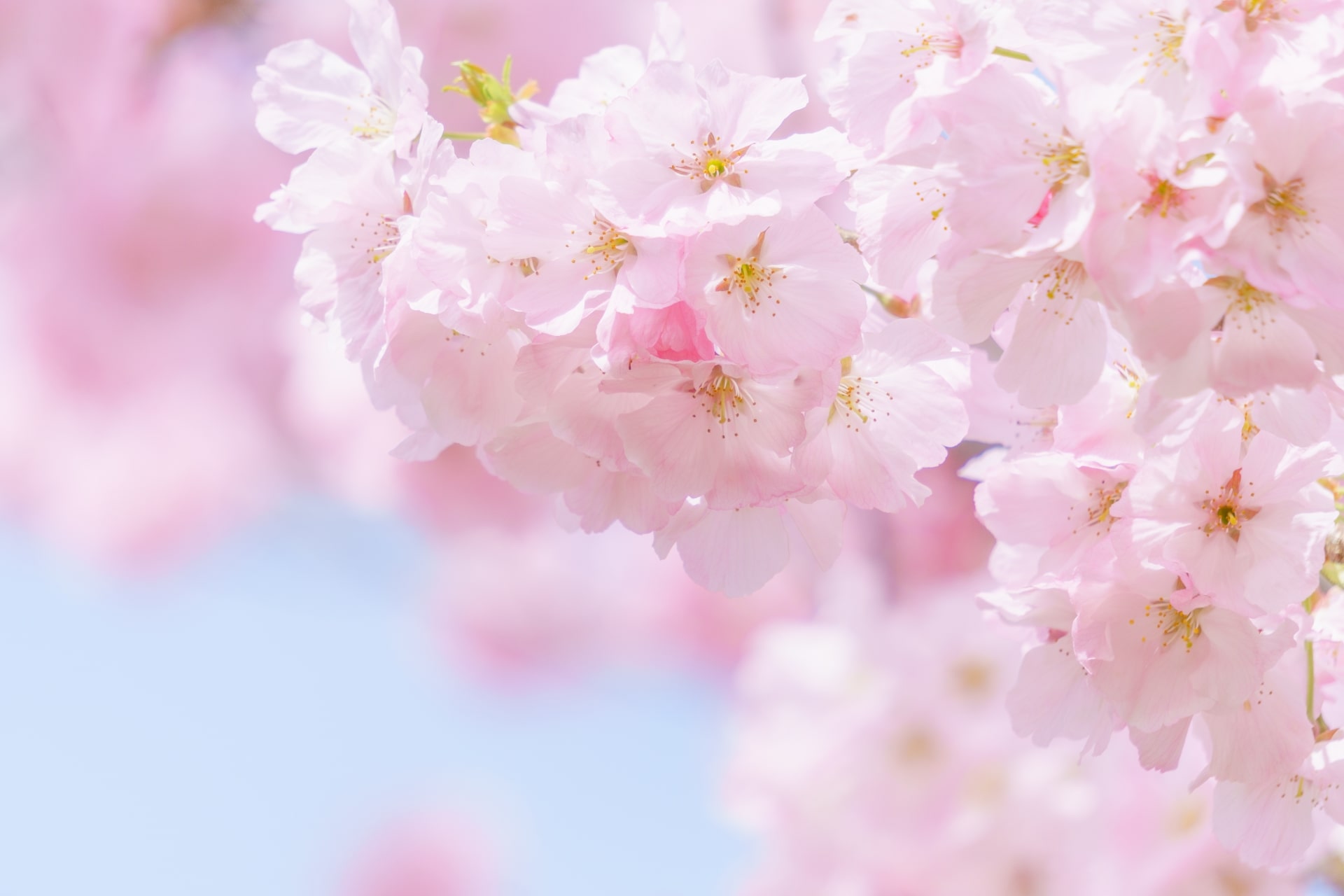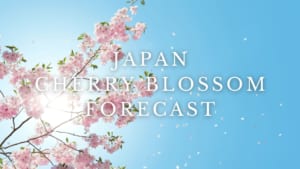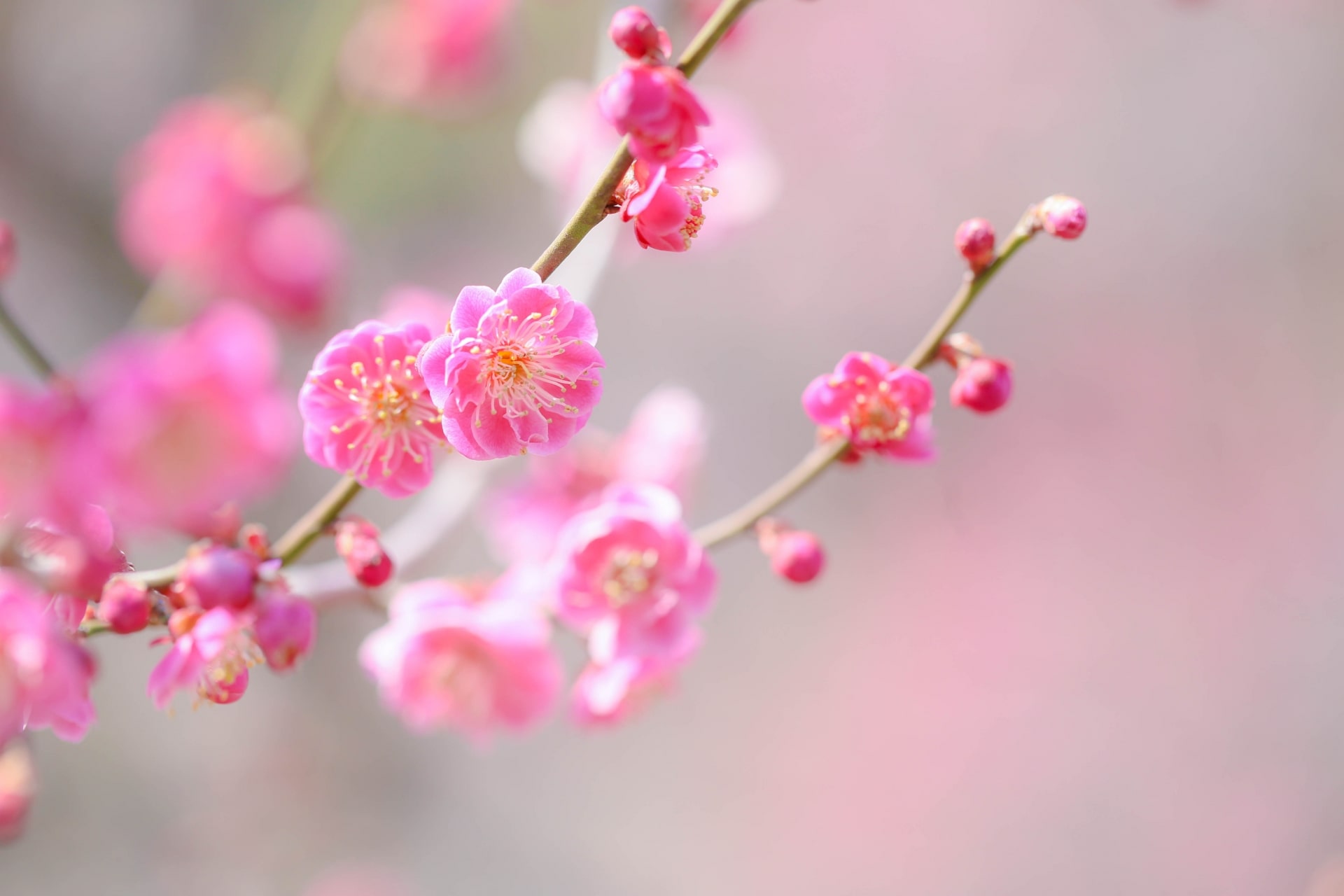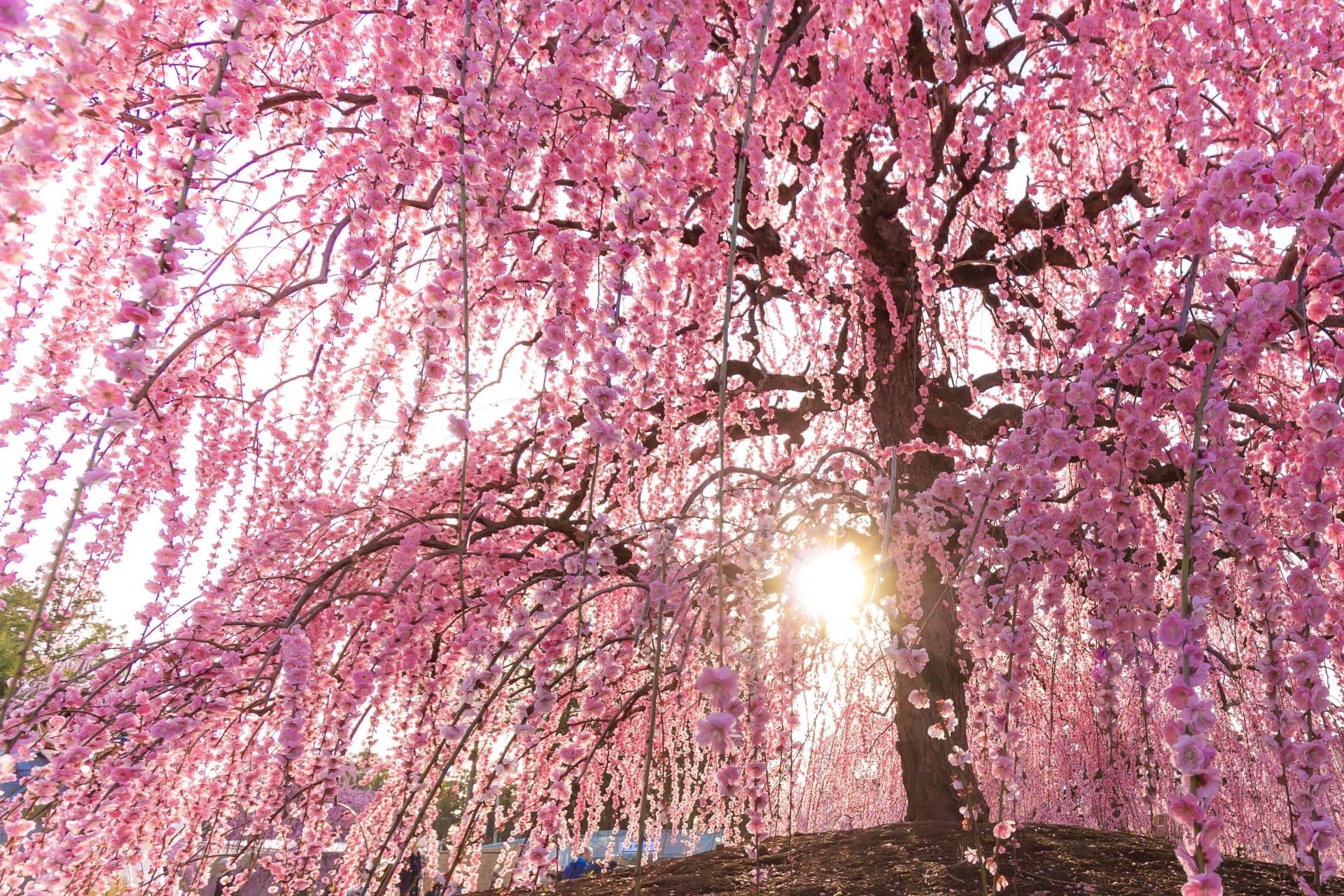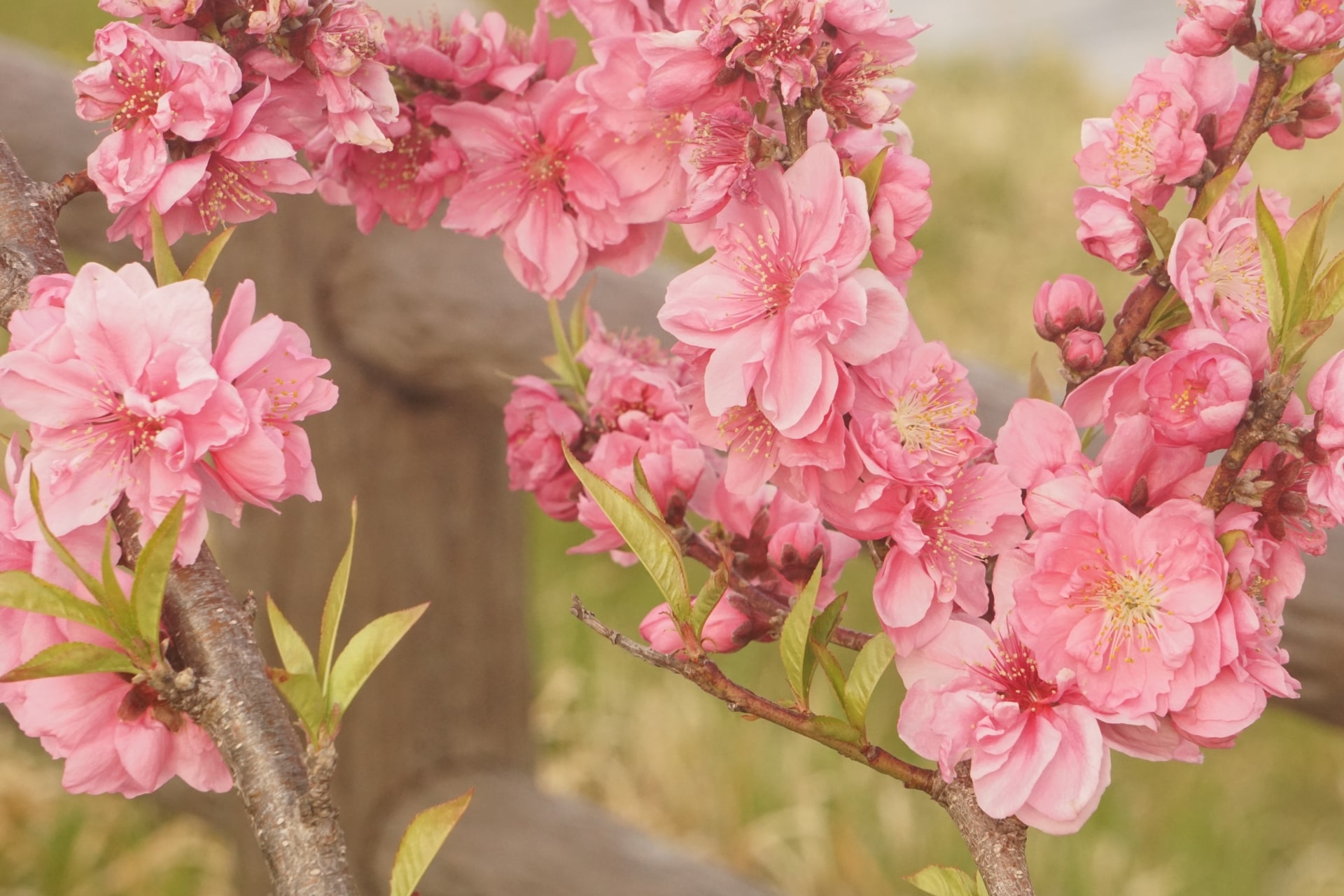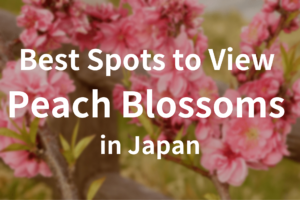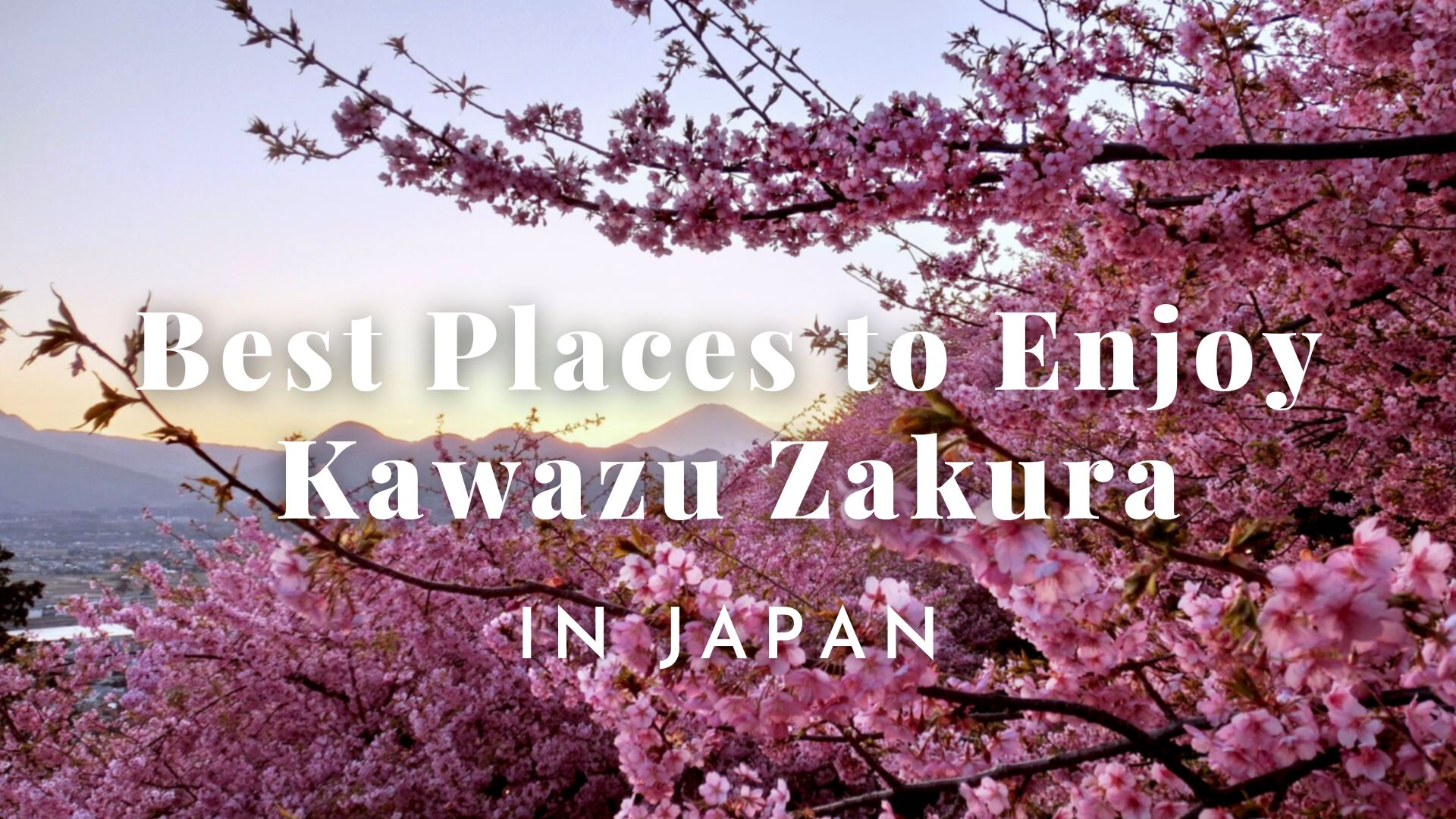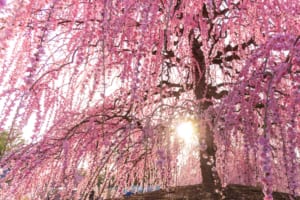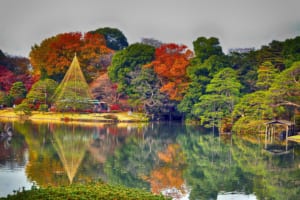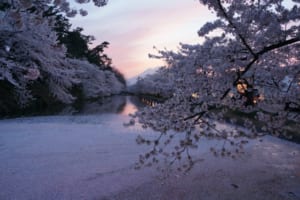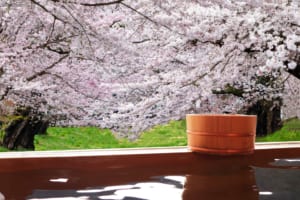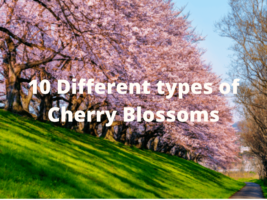Cherry, Plum and Peach Blossoms: What is the Difference
Main distinctions between Sakura, Ume, and Momo blossoms
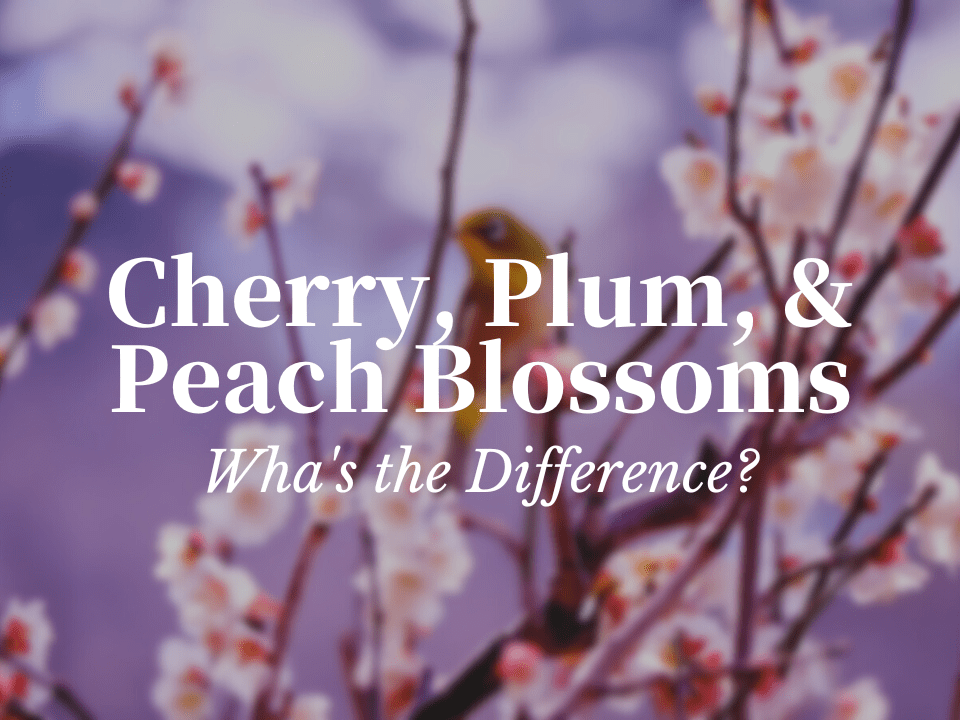
Japanese spring flowers, like cherry blossoms, have attracted and will keep attracting people not only from Japan but also from foreign countries. Spring flowers are a Japanese icon and symbol, especially cherry blossoms. Spring is the most popular and busiest season to visit Japan from different countries and cultures.
Japanese have been enjoying spring flowers for a long time ago. More than 1300 years ago in the Nara period to be exact.
Did you know that there are flowers other than cherry blossoms to be enjoyed in spring? As I mentioned previously, there are other kinds of trees that bloom in spring: cherry blossom, plum blossom, and peach blossom. We will be introducing these three trees in depth. Hoping you enjoy spring three times more by knowing them.
Cherry blossoms (Sakura 桜)
Cherry blossom is the most well-known flower in Japan. As you probably know, in Japanese, they are called sakura (桜). They are the only flowers that get mentioned in a weather forecast to track the blooming progress and to help us to see when is the best time to go see the flowers.
It is said that there are more than 600 species of sakura in Japan and their flowering periods are different from one another. Also, many wild species bloom from mid-March to early May. Wild species, even if they are the same species, are genetically different from one tree to another, so even if they are planted in the same place, there is some variation in the time when they reach full bloom. Also, the climate is one of the factors to determine the time of flowering. A warmer climate reaches full bloom first and goes up to the northern region.
The most well-known spot to see cherry blossom trees is Mount Yoshinoyama (吉野山) in Nara prefecture. The mountain gets covered by thousands of cherry trees. Daigoji (醍醐寺) in Kyoto prefecture is another popular Sakura spot. It is a very historical temple and is also famous for its 700 Sakura trees. People from over 1200 years ago have enjoyed sakura here.
Plum blossoms (Ume 梅)
The second tree that symbolizes Japan is a plum tree. Their Japanese name is ume (梅). They bloom from late January to late April, but there are some species that even bloom as late as late December. Blossoms of plum trees are celebrated in Japan and are considered the end of winter and that spring is approaching. Plum flowers bloom first, compare to the other two trees, sakura, and peach of course.
There are more than 500 species of plum trees. Most plum blossoms have five petals and range in color from white to dark pink. Although people nowadays correlate spring and cherry blossoms, people were enjoying plum blossoms more than cherry blossoms. As time went by, people began to enjoy cherry blossoms around 1200 years ago.
One of the popular places to see plum blossom a “Fuchu City Local History Museum of Forest (府中市郷土の森博物館) in Tokyo. There are about 60 different kinds of plum trees and there are about 1,100 trees in total. The best time to visit to see the plum blossom here is mid-February. “Rokugi-en (六義園)” is another place to enjoy plum blossom in Tokyo as well.
Peach blossoms (Momo 桃)
Flowers of peach trees also bloom in spring; mid-March to Late April.
China is the origin of peach trees and at first, trees were brought from there as well. However, no one knows when exactly they were brought to Japan. Peach trees were mentioned in the Kojiki (古事記) which is considered to be the oldest extant literary work in Japan, written sometime around the year 710. Also, some peach seeds were found in a prehistoric site in Nagasaki prefecture which was from over 7,000 years ago. Though peach blossoms may not be the most appreciated compared to the other two, they have a very strong connection with Japanese history and culture.
Fuefuki togenkyo (笛吹桃源郷) in Yamanashi prefecture is one of the famous peach blossom spots. Togenkyo means “otherworldly” and “utopia”. When April rolls around, 300,000 peach trees bloom and it is breathtaking. Koga Kubo Park (古河公方公園) has many peach trees as well. About 1,500 peach trees are planted including five different species. Koga Peach festival (古河桃祭り) is held every year from late March to early April. More than 200,000 people visit. The full blossom reaches when the festival is held.
Differences between cherry, plum, and peach blossoms
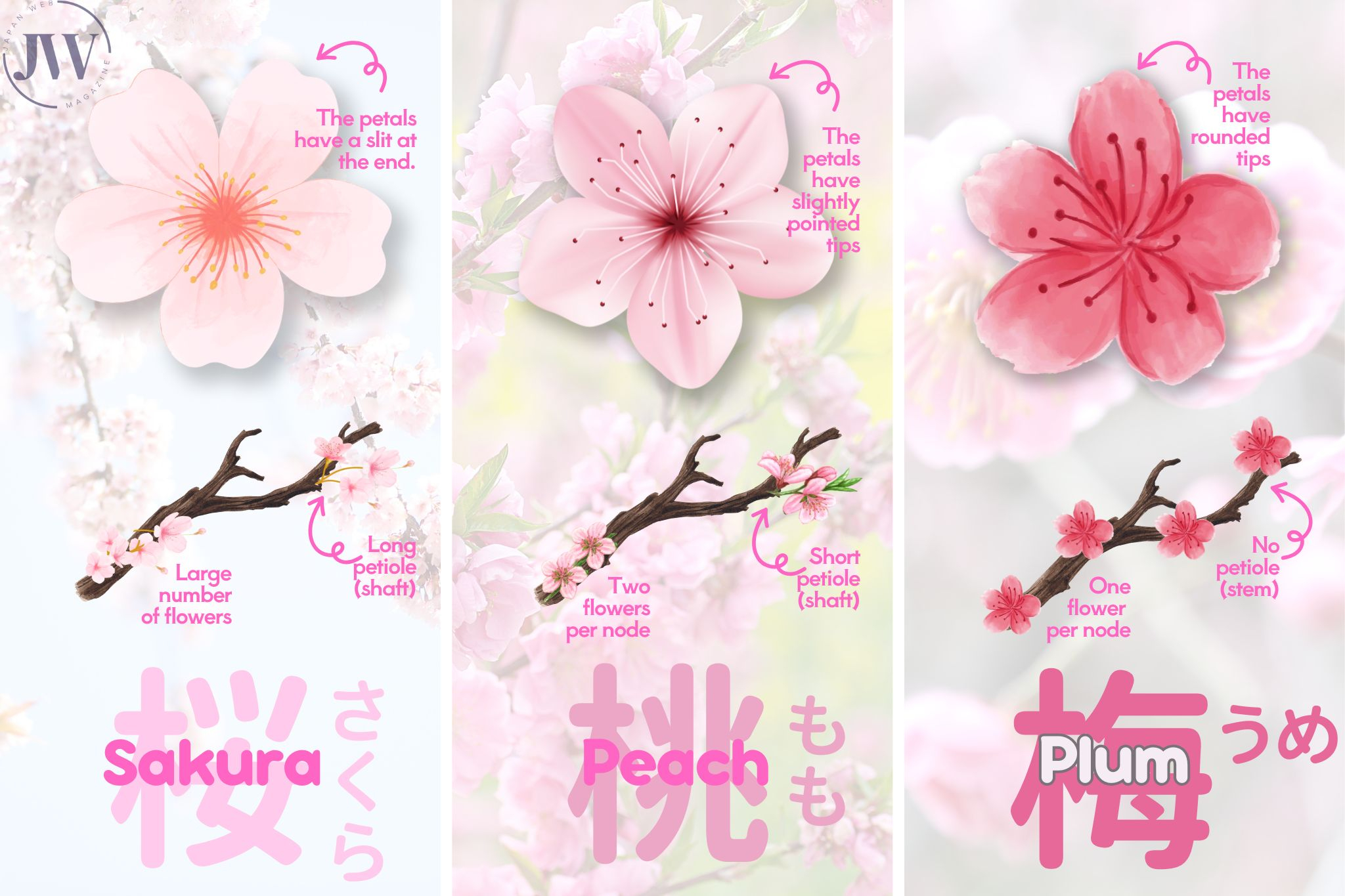
These three flowers are very similar looking. They all have similar-sized, pinkish-colored flowers that bloom in the spring. Especially plum and cherry trees are the two that get easily mixed up because of their similar appearance of flowers. Not all people who have lived and experienced spring many times in their lives in Japan can tell the differences.
However, it is not impossible to spot the differences between the three if you know where to look and take a look closely. We will be listing three differences to distinguish cherry, plum, and peach trees.
1. Shape of petals
The shape of the petals is one of the elements when it comes to differentiating. The tip of a peach and cherry petal is sharp where as a plum pedal has a very round shape with no edges. What about the other two? Cherry blossom petals have slits on the tip of the petal. Although the depth of slits differs from specie to specie, they almost look like a heart shape. On the other hand, peach flowers have no slits on the tip of a petal.
2. How they blossom
Peach trees are the only ones where flowers and leaves come out simultaneously when the other two do not. With the other two, the flower bloom first, and after reaching the end of full bloom, leaves come out. So technically both flowers and leaves can be seen in one tree, but they do not come out at the same time.
3. The trunk of the trees
The trunk of trees is distinguishable too. Peach trees have whitish-colored trunks. Also, have a relatively smooth surface with dots scattered around. Cherry and plum trees both have rough surfaces. While plum trees have a darker-toned brown trunk, cherry trees have a reddish-toned brown trunk with short horizontal stripes. Newer branches look similar and hard to spot the differences so the better option is to take a look at a thicker trunk.
Japan has various ways to enjoy each season or climate. Thanks to Japanese geography that stretches from north to south, it leads to having a variety of climates in just one country. People in Japan have always been appreciating each and every season and it is really a blessing. I hope you regain the appreciation of the season and beautiful mother nature while you stay in Japan. There are many other places to enjoy all cherry, plum, and peach blossoms all through Japan, so please search if there are any famous spots to visit near where you stay or live.
For more information about viewing flowers in Japan, check these articles below, too!
▽Related Articles▽
Written by





